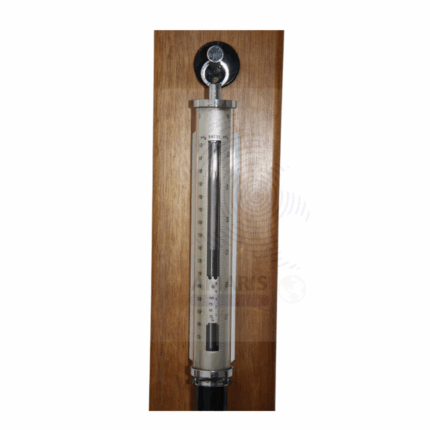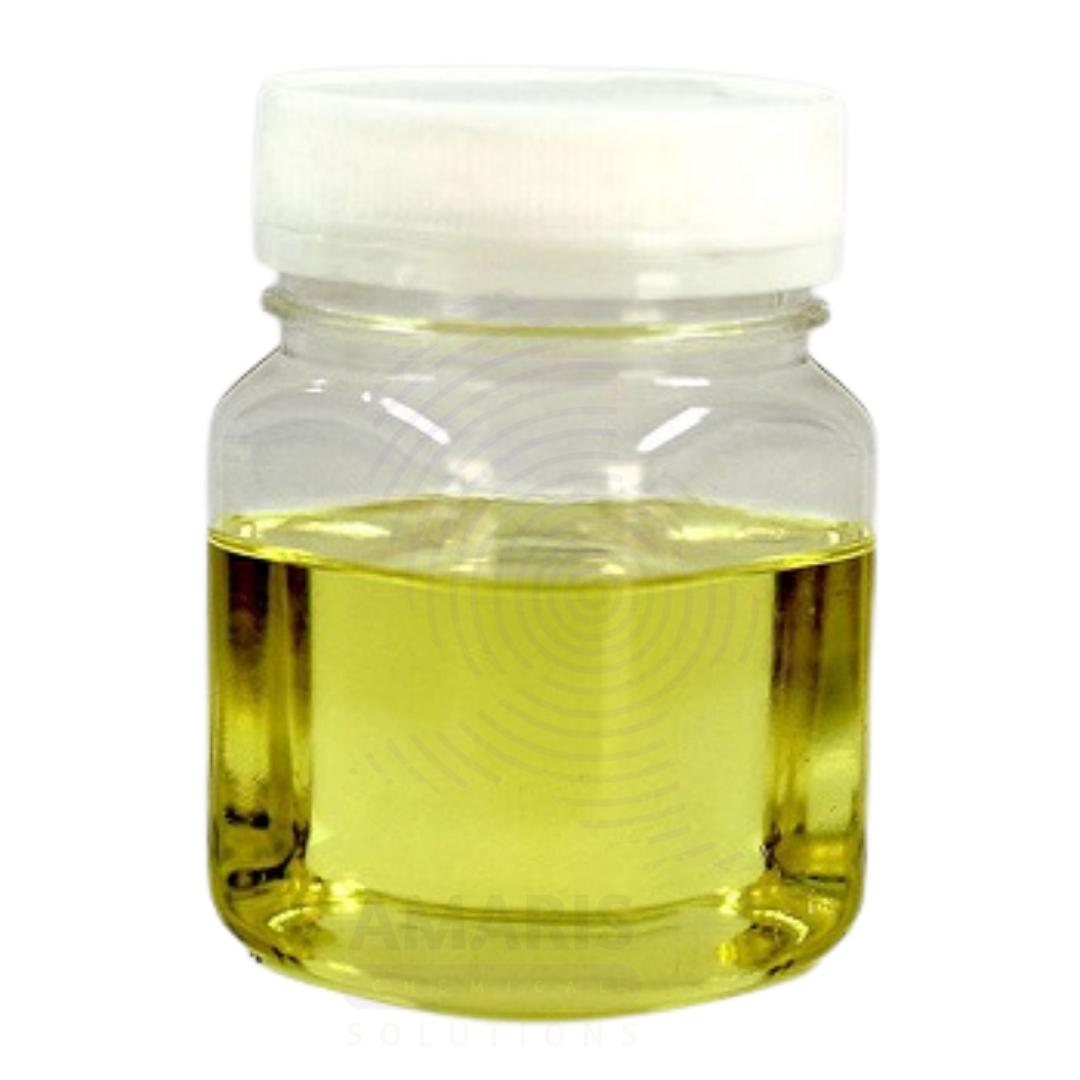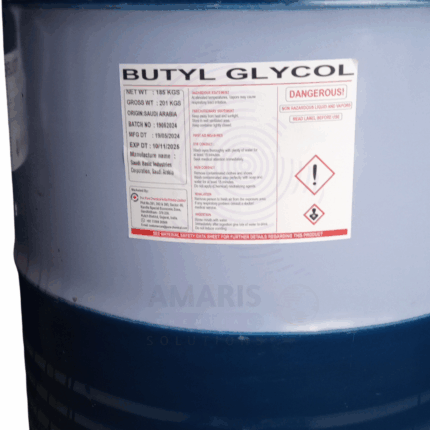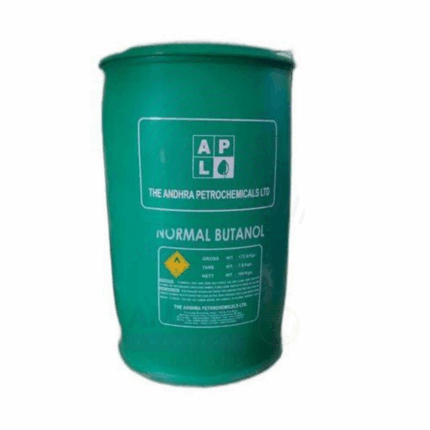Back to products


Fortin Barometer with Mercury
$ 17.52 Original price was: $ 17.52.$ 17.43Current price is: $ 17.43.
Turpentine Oil
$ 15.20 Original price was: $ 15.20.$ 15.12Current price is: $ 15.12.
Whatsapp Order
Turpentine Oil is a volatile essential oil distilled from the resin of pine trees (primarily Pinus species). It is a colorless to pale yellow fluid with a strong, distinctive odor, composed mainly of terpenes such as alpha-pinene and beta-pinene. Traditionally used as a solvent and medicinal agent, turpentine oil has broad applications across industrial, pharmaceutical, and agricultural sectors. Its natural origin and unique chemical profile also make it valuable in fragrance, flavoring, and organic synthesis.
Description
Table of Contents
Toggle
Turpentine Oil
Primary Uses
- Pharmaceutical and Therapeutic Applications
- Used in chest rubs and balms for respiratory relief and congestion easing
- Included in topical liniments and ointments for muscle and joint pain relief
- Applied in formulations for anti-inflammatory and circulatory-stimulating effects
- Used in vapor therapy to support bronchial function and decongestion
- Aromatherapy & Wellness
- Diffused to purify the air and support respiratory clarity
- Used in blends for mental stimulation, focus, and emotional uplift
- Incorporated in massage oils for its warming and circulation-boosting properties
- Topical Applications
- Diluted in carrier oils for application on sore muscles and minor aches
- Used in balms and compresses to relieve neuralgia and joint stiffness
- Applied in natural insect repellents due to its strong scent and insecticidal properties
- Cosmetics and Personal Care
- Added to soaps and body washes for its strong pine aroma and cleansing power
- Occasionally used in foot care products for odor control and fungal defense
Secondary Uses
- Cleaning and Detergent Products
- Used in natural and industrial degreasers and stain removers for its solvent power
- Added to multi-surface cleaners and floor polishes as a fragrance and cleaning enhancer
- Incorporated in heavy-duty hand cleaners for paint and grease removal
- Paint and Coatings Industry
- Used as a solvent and thinner in oil-based paints, varnishes, and lacquers
- Acts as a natural diluent for artist paints and ink formulations
- Included in industrial coatings and sealants for enhanced spreadability and drying
- Industrial and Specialty Applications
- Employed in adhesive formulations and sealants as a solvent carrier
- Used in the manufacture of synthetic camphor and terpene-based chemicals
- Applied in rubber and plastics as a process aid or solvent component
- Fragrance and Ambient Scenting
- Used in air fresheners and cleaning sprays for its sharp, piney scent
- Included in forest-scented candles, incense, and room sprays
Additional information
| PACK SIZE |
5kg |
|---|
KEY PRODUCT FEATURES
1. Basic Identification Attributes
- Botanical Source: Resin of Pinus spp. (e.g., Pinus pinaster, Pinus sylvestris)
- Common/Trade Name: Turpentine Oil
- INCI Name: Pinus Palustris Oil (or species-specific name)
- CAS Number: 8006-64-2
- HS Code: 3301.29
- Synonyms: Gum Turpentine, Pine Turpentine, Spirits of Turpentine
2. Physical & Chemical Properties
- Physical State: Volatile liquid
- Color & Odor: Colorless to pale yellow; sharp, woody, resinous aroma
- Solubility: Insoluble in water; soluble in alcohol, oils, and organic solvents
- Refractive Index: 1.460 – 1.485
- Specific Gravity: 0.855 – 0.880
- Main Components: Alpha-pinene, beta-pinene, limonene
3. Safety & Hazard Attributes
- GHS Classification: Flammable liquid and vapor; may cause skin and eye irritation
- Toxicity: Toxic if ingested; may be harmful if inhaled in large quantities
- Exposure Limits: Refer to Safety Data Sheet (SDS)
- Allergen Information: Contains naturally occurring allergens like pinene and limonene
4. Storage & Handling Attributes
- Storage Conditions: Store in tightly sealed containers in a cool, well-ventilated area away from heat and ignition sources
- Container Type: Metal or HDPE drums with sealed closures
- Shelf Life: 12 to 24 months under proper storage
- Handling Precautions: Avoid inhalation and direct skin contact; use protective gear during bulk handling
5. Regulatory & Compliance Attributes
- Compliant with IFRA for limited use in fragrances
- Subject to transport regulations due to flammability (UN 1299, Class 3)
- Produced in GMP-compliant environments for applicable grades
6. Environmental & Health Impact
- Biodegradability: Readily biodegradable in the environment
- Ecotoxicity: Moderate aquatic toxicity; prevent large discharges into waterways
- Bioaccumulation: Not expected to significantly bioaccumulate
SAFETY HANDLING PRECAUTIONS
Safety Handling Precautions
- PPE Required: Gloves, goggles, flame-resistant clothing, and masks in industrial environments
- Handling Guidelines: Ensure adequate ventilation; ground all containers to prevent static discharge
First Aid Measures
- Inhalation: Move to fresh air; consult medical help if symptoms persist
- Skin Contact: Wash with soap and water; discontinue use if irritation occurs
- Eye Contact: Rinse thoroughly with water for 15 minutes; seek medical attention
- Ingestion: Do not induce vomiting; seek immediate medical assistance
Firefighting Measures
- Fire Hazards: Highly flammable; keep away from sparks, open flames, and heat
- Extinguishing Media: Dry chemical, carbon dioxide, foam, or water fog (not a solid stream)
- Special Precautions: Use self-contained breathing apparatus and full protective gear
- Hazardous Combustion Products: Carbon monoxide, carbon dioxide, dense smoke
Related products
Butyl Glycol
Butyl Glycol, also known as 2-Butoxyethanol, is a colorless to pale yellow liquid with a mild, sweet ether-like odor. It is an organic solvent classified as a glycol ether, with the molecular formula C6H14O2. Butyl Glycol is highly miscible with water, alcohols, and many organic solvents. It is widely used in industrial and commercial applications due to its excellent solvent properties, low volatility, and moderate toxicity. Its high solvency and compatibility with both aqueous and organic phases make it valuable in coatings, cleaning products, inks, and adhesives.
Ethylene Glycol Monoethyl Ether
Ethylene Glycol Monoethyl Ether, also known as 2-Ethoxyethanol or Ethyl Cellosolve, is a clear, colorless, and hygroscopic liquid with moderate volatility and excellent solvency. It belongs to the glycol ether family and is widely used as a solvent and coalescing agent due to its ability to dissolve both polar and non-polar compounds. It is miscible with water and many organic solvents and has a moderate boiling point (~135°C). It finds extensive applications across coatings, inks, adhesives, cleaners, and chemical synthesis industries.
Methoxy Propanol Glycol Ether
Methoxy Propanol Glycol Ether, commonly known as PM Glycol Ether, is a clear, colorless liquid with a mild ether-like odor. It belongs to the glycol ether family and is widely used as a solvent in coatings, inks, cleaning products, and industrial applications due to its excellent solvency, low volatility, and favorable evaporation rate. PM Glycol Ether is miscible with water and many organic solvents, making it versatile for a broad range of formulations.
Mineral Turpentine
Mineral Turpentine, also known as White Spirit or Stoddard Solvent, is a clear, petroleum-derived solvent widely used in industrial, commercial, and household applications. It is a mixture of aliphatic and alicyclic hydrocarbons obtained from the distillation of crude oil. Mineral Turpentine serves as an effective solvent for paints, varnishes, and adhesives and is valued for its moderate evaporation rate and good solvency power.
N-Butanol
N-Butanol (1-butanol) is a four-carbon linear alcohol with the chemical formula C₄H₉OH. It is a colorless, flammable liquid with a mild, alcoholic odor. N-Butanol is widely used as a solvent in paints, coatings, adhesives, and chemical synthesis. It serves as an intermediate in the manufacture of plasticizers, butyl acrylate, and other chemicals. Its moderate volatility and solvent properties make it valuable in industrial and commercial applications.
Normal Butanol
Normal Butanol is a straight-chain primary alcohol with the chemical formula C4H10O. It is a colorless, flammable liquid with a characteristic alcoholic odor. Known for its good solvent properties and moderate evaporation rate, n-Butanol is widely used in industrial applications such as solvents for paints, coatings, adhesives, and as an intermediate in chemical synthesis.
Shellsol T
Shellsol T is a low aromatic, high-purity petroleum hydrocarbon solvent known for its excellent solvency power and relatively low odor. It is a clear, colorless liquid commonly used in coatings, adhesives, inks, and chemical processing where strong solvency with moderate evaporation rates is needed. Its balanced properties make it suitable for industrial applications requiring controlled drying and good compatibility with various resins and polymers.
White Spirit
White Spirit is a clear, colorless, petroleum-derived solvent widely used in industrial, commercial, and household applications. It is composed primarily of aliphatic and alicyclic hydrocarbons, offering excellent solvency properties, moderate evaporation rate, and low odor varieties. White Spirit serves as a powerful degreaser, paint thinner, and cleaning agent, facilitating effective removal of oils, greases, and paints.


 Preservatives(food)
Preservatives(food) Flavor Enhancers
Flavor Enhancers Acidulants
Acidulants Sweeteners
Sweeteners Antioxidants
Antioxidants Colorants(food)
Colorants(food) Nutraceutical Ingredients (food)
Nutraceutical Ingredients (food) Nutrient Supplements
Nutrient Supplements Emulsifiers
Emulsifiers
 Collectors
Collectors Dust Suppressants
Dust Suppressants Explosives and Blasting Agents
Explosives and Blasting Agents Flocculants and Coagulants
Flocculants and Coagulants Frothers
Frothers Leaching Agents
Leaching Agents pH Modifiers
pH Modifiers Precious Metal Extraction Agents
Precious Metal Extraction Agents
 Antioxidants(plastic)
Antioxidants(plastic) Colorants (Pigments, Dyes)
Colorants (Pigments, Dyes) Fillers and Reinforcements
Fillers and Reinforcements Flame Retardants
Flame Retardants Monomers
Monomers Plasticizers
Plasticizers Polymerization Initiators
Polymerization Initiators Stabilizers (UV, Heat)
Stabilizers (UV, Heat)
 Antifoaming Agents
Antifoaming Agents Chelating Agents
Chelating Agents Coagulants and Flocculants
Coagulants and Flocculants Corrosion Inhibitors
Corrosion Inhibitors Disinfectants and Biocides
Disinfectants and Biocides Oxidizing Agents
Oxidizing Agents pH Adjusters
pH Adjusters Scale Inhibitors( water)
Scale Inhibitors( water)
 Antioxidants(cosmetic)
Antioxidants(cosmetic) Emollients
Emollients Fragrances and Essential Oils
Fragrances and Essential Oils Humectants
Humectants Preservatives
Preservatives Surfactants(cosmetic)
Surfactants(cosmetic) Thickeners
Thickeners UV Filters
UV Filters
 Fertilizers
Fertilizers Soil Conditioners
Soil Conditioners Plant Growth Regulators
Plant Growth Regulators Animal Feed Additives
Animal Feed Additives Biostimulants
Biostimulants Pesticides (Herbicides, Insecticides, Fungicides)
Pesticides (Herbicides, Insecticides, Fungicides)
 Active Pharmaceutical Ingredients (APIs)
Active Pharmaceutical Ingredients (APIs) Excipients
Excipients Solvents(pharmaceutical)
Solvents(pharmaceutical) Antibiotics
Antibiotics Antiseptics and Disinfectants
Antiseptics and Disinfectants Vaccine Adjuvants
Vaccine Adjuvants Nutraceutical Ingredients (pharmaceutical)
Nutraceutical Ingredients (pharmaceutical) Analgesics & Antipyretics
Analgesics & Antipyretics
 Analytical Reagents
Analytical Reagents Solvents(lab)
Solvents(lab) Chromatography Chemicals
Chromatography Chemicals Spectroscopy Reagents
Spectroscopy Reagents microbiology-and-cell-culture-reagents
microbiology-and-cell-culture-reagents Molecular Biology Reagents
Molecular Biology Reagents Biochemical Reagents
Biochemical Reagents Inorganic and Organic Standards
Inorganic and Organic Standards Laboratory Safety Chemicals
Laboratory Safety Chemicals Specialty Laboratory Chemicals(Special Laboratory Equipment)
Specialty Laboratory Chemicals(Special Laboratory Equipment)
 Demulsifiers
Demulsifiers Hydraulic Fracturing Fluids
Hydraulic Fracturing Fluids Scale Inhibitors(oil)
Scale Inhibitors(oil) Surfactants(oil)
Surfactants(oil) Drilling Fluids
Drilling Fluids
 Dyes and Pigments
Dyes and Pigments Bleaching Agents
Bleaching Agents Softening Agents
Softening Agents Finishing Agents
Finishing Agents Antistatic Agents
Antistatic Agents
 Admixtures
Admixtures Waterproofing Agents
Waterproofing Agents Sealants and Adhesives
Sealants and Adhesives Curing Compounds
Curing Compounds Concrete Repair Chemicals
Concrete Repair Chemicals Anti-Corrosion Coatings
Anti-Corrosion Coatings
 Surfactants(cleaning)
Surfactants(cleaning) Builders
Builders Enzymes
Enzymes Solvents (Cleaning)
Solvents (Cleaning) Fragrances
Fragrances
 Electronic Chemicals
Electronic Chemicals Catalysts
Catalysts Lubricants
Lubricants Photographic Chemicals
Photographic Chemicals Refrigerants
Refrigerants Automotive chemicals
Automotive chemicals Pyrotechnic Chemicals
Pyrotechnic Chemicals
 Biodegradable Surfactants
Biodegradable Surfactants Bio-based Solvents
Bio-based Solvents Renewable Polymers
Renewable Polymers Carbon Capture Chemicals
Carbon Capture Chemicals Wastewater Treatment Chemicals
Wastewater Treatment Chemicals
 Pigments
Pigments Solvents(paint)
Solvents(paint) Specialty Coatings
Specialty Coatings Binders/Resins
Binders/Resins Additives
Additives Driers
Driers Anti-Corrosion Agents
Anti-Corrosion Agents Functional Coatings
Functional Coatings Application-Specific Coatings
Application-Specific Coatings
 Fresh Herbs
Fresh Herbs Ground Spices
Ground Spices Whole Spices
Whole Spices Spice Blends
Spice Blends Dried Herbs
Dried Herbs
 Leavening Agents
Leavening Agents Dough Conditioners
Dough Conditioners Flour Treatments
Flour Treatments Fat Replacers
Fat Replacers Decoratives
Decoratives Preservatives(baking)
Preservatives(baking)
 Plasticizers & Softeners
Plasticizers & Softeners Reinforcing Agents
Reinforcing Agents Adhesion Promoters
Adhesion Promoters Vulcanizing Agents
Vulcanizing Agents Antidegradants
Antidegradants Blowing Agents
Blowing Agents Fillers & Extenders
Fillers & Extenders Accelerators & Retarders
Accelerators & Retarders



























